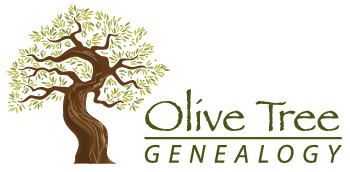William Blake Letter of 1847 With Notations
Mrs. Mary Richards (1)
In Care Of Captain William Richards (2)
Perth (3), Upper Canada
America
Ballin????? (4)
April 30th 1847
Dear Mrs. Richards
I am shure you will be very sorry to hear that your uncle, Cuthbert Blake
(5), is dead and it is with feelings of the deepest sorrow that I write
the same to you for he was my father, poor man.
Often have I heard him speak of you with feelings of fond remembrance.
Poor man, he had no support but my days wages out of the charitable
works. I have his wife (6) to support and a troublesome bargain she is.
We the rest of your friends are well. Your uncle Joseph (7) is in good
health and so is uncle Robert (8). All well to do and comfortable.
It is all most beyond belief the distress that at present exists in
Ireland on account of the failure of the potatoes (9). Famine and strange
disorders (10) of all sorts have carried off thousands of the poor
people. I think there has more died inside the last six months than there
has for years. The markets are very high; oat meal is three shillings per
stone, yellow meal 2-6 per stone, flower is 3-8 per stone, ????? half a
crown and in fact every thing is so high that it is hard to say what the
wourld will come to.
I hope you will write and give a particular account. There is vast
multitudes (11) of people leaving Ireland for America this season.
I remain your humble servant
William Blake (12)
(1) Mary Richards Mary Richardson-Richards (c1791-1861) married sea
Captain William Richards (c1790-1854) in about 1815, in Ireland. She was
the daughter of Dorothea Blake-Richardson-Greenley (????-1828) by her
first marriage. After being widowed (probably in the 1798 rebellion) her
mother married John Greenley (1775-1854) in about 1801.
(2) Captain William Richards Captain William Richards (c1790-1854).
Born in Wexford County, Ireland. Seems to have gone to sea around age 12,
served in the British Navy during the Napoleonic and American wars, and
later became a merchant ship captain. He married Mary Richardson in about
1815 in Ireland. They moved to Nova Scotia Canada in about 1817 and to
New Brunswick about 1818. From the east coast of Canada he sailed a
schooner in the West Indies trade and later built and commanded his own
brig, the “William & Mary”, in the same trade until the brig and her
cargo were lost in a storm. He and wife Mary moved to Perth, Ontario
sometime prior to 1832. William built and commanded the Tay & Rideau
Canal steamer “Enterprise” from 1833 to 1836 and the steamer “George
Buchanan” on Chats Lake for a year or two thereafter.
(3) Perth Military Settlement of Perth, founded in the summer of 1816.
Captain William Richards & wife Mary moved to Perth sometime prior to
1832 and purchased or built a house on 14 acres of Concession-3/Lot-1,
Drummond Township. The Concession-3/Lot-1 property was settled/owned by
John Greenley (1775-1854) and Dorothea Blake-Richardson-Greenley (????-
1828), Mary Richardson-Richards’ mother. Dorothea and her second husband
John Greenley had arrived at Perth in 1816.
(4) Ballin???? Unreadable. Probably Ballinglen Townland, home area of
the Blake family in Preban Parish, County Wicklow.
(5) Cuthbert Blake Cuthbert Blake, who has just died, is brother to
Dorothea Blake-Richardson-Greenley (????-1828), wife of John Greenley
(1775-1854) and thus Mary’s uncle. The Blake family, parents unknown,
included Cuthbert, John, Joseph, Robert, Dorothea and Ann. All seem to
have been born at the Townland of Ballinglen, Preban Parish, County
Wicklow, Ireland.
(6) His Wife Although letter writer William Blake refers to Cuthbert
Blake as his father, apparently Cuthbert Blake’s wife, at the time of his
death, was not William Blake’s mother but likely a second wife.
(7) Joseph Joseph Blake, brother of Dorothea Blake-Richardson-Greenley
(????-1828), wife of John Greenley (1775-1854).
(8) Robert Robert Blake, brother of Dorothea Blake-Richardson-Greenley
(????-1828), wife of John Greenley (1775-1854).
(9) Potato Crop Failure Potatoes are not native to Europe and arrived
from South America in the early 1500s, being introduced to Ireland about
1590. By the 1800s the potato was the staple crop in the poorest areas
and more than 3,000,000 Irish subsisted solely on the potato. The famine
began in September 1845 when the plants were infected by an airborne
fungus (phytophthora infestans). The potato plants turned black, curled
and then rotted. An estimated 1,500,000 Irish died of starvation and
disease associated with the successive failure of the potato crop from
1845 through 1850.
(10) Strange Disorders This is a reference to the outbreak of epidemic
diseases associated with the famine (and widespread proverty) such as
typhus and dysentery. Most of the “famine deaths” (see # 9 above) were
not from hunger, but from these outbreaks of disease attacking bodies
weakened by hunger.
(11) Multitudes The potato famine and its aftermath led to the emigration
of more than 1,000,000 Irish, mostly to North America. In 1847 alone (the
year this letter was written) at least 100,000 Irish left their homeland.
(12) William Blake Son of Cuthbert Blake, therefore a nephew to Dorothea
Blake-Richardson-Greenley (c1765-1828), wife of John Greenley (1775-1854)
and cousin to Mary Richardson-Richards (c1791-1861). This may be the
William Blake (c1810-1882) who erected a stone in Preben Parish Cemetery
memorializing his wife Jane Wallace (c1813-1878) and their children
Robert (d.1875) Charlotte Barbara (c1826-1873), Elizabeth (c1848-1874)
and Hendrin George (c1851-1881). A nearby stone memorializes a Sarah
Blake (c1820-1856).
Note: Despite the very difficult times being experienced in Ireland at
the time this letter was written (1847) it seems that the Blake family,
or least some branches of it, were reasonably “well to do and
comfortable”.
Submitter: Ron W. Shaw scdhrcda@perth.igs.net
